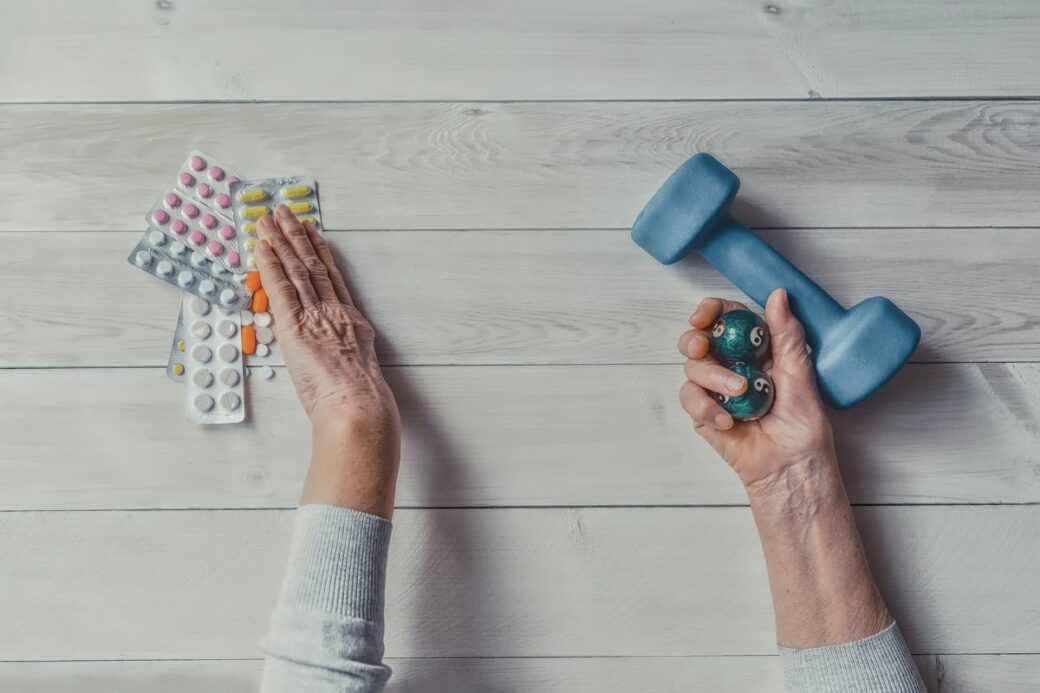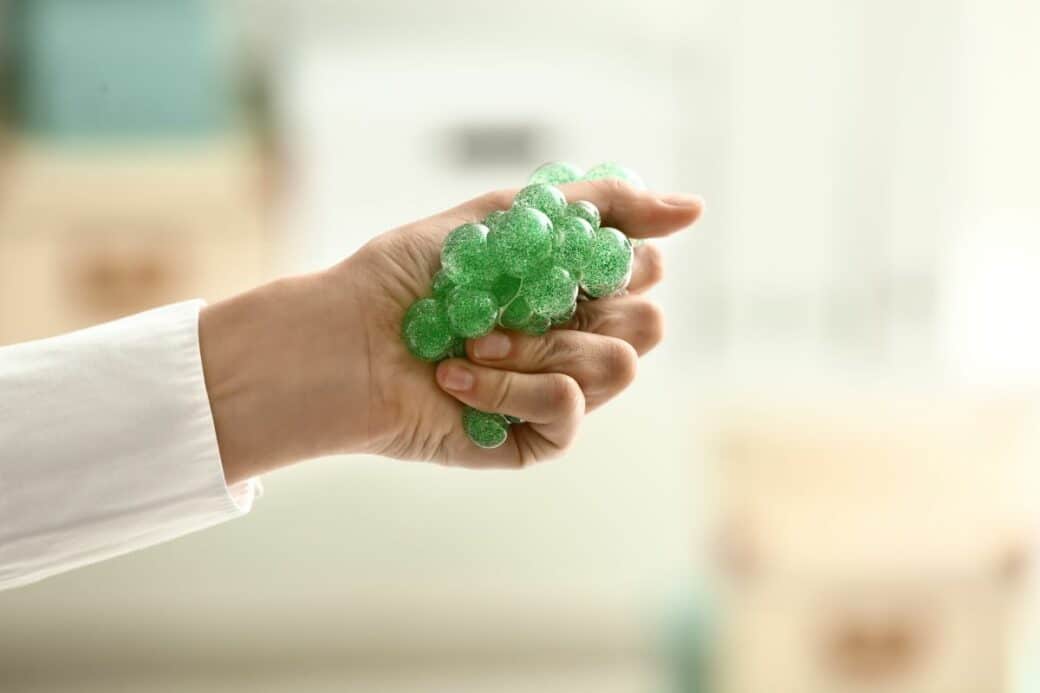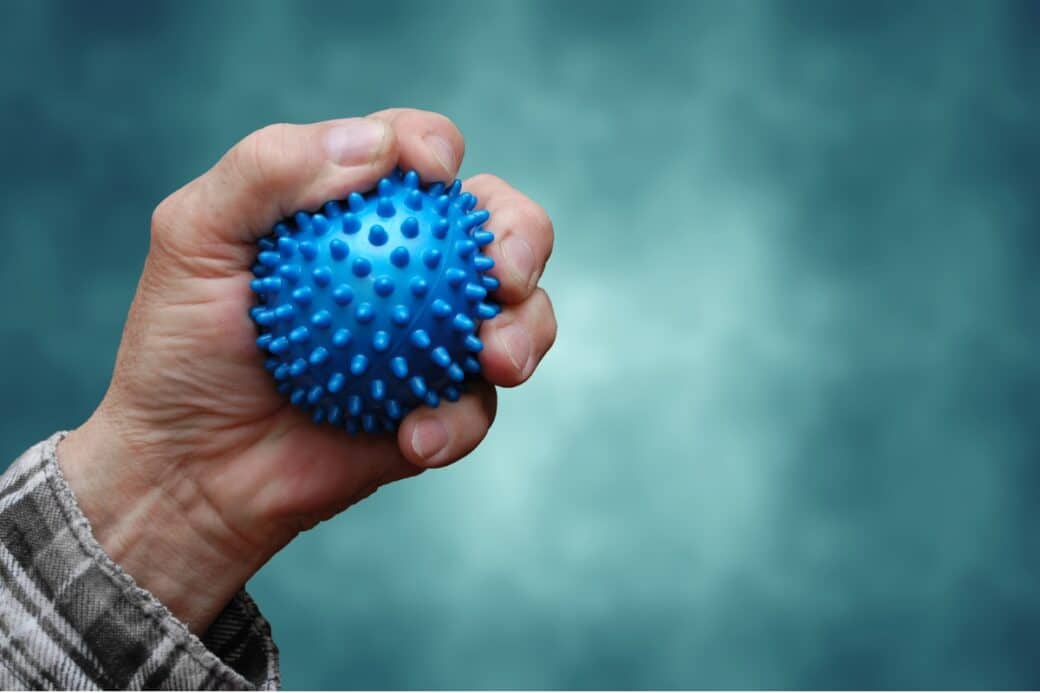Are stress balls beneficial for stroke patients? This article explores the potential healing power of stress balls and their impact on stroke recovery. Discover how the simple act of squeezing a stress ball can improve hand strength and dexterity, relieve tension, and enhance emotional well-being for those who have suffered from a stroke. Learn about the various types of stress balls available and how they can be incorporated into rehabilitation programs to aid in the recovery process. Find out why stress balls may be the perfect tool to help stroke patients regain control and find solace in their healing journey.

Are Stress Balls Good For Stroke Patients: Understanding Stroke and Its Impacts
What is a Stroke?
A stroke occurs when there is a disruption of blood flow to the brain, resulting in the death of brain cells. This can happen due to a blockage in an artery (ischemic stroke) or a burst blood vessel (hemorrhagic stroke). It is a serious medical condition that requires immediate attention. The effects of a stroke can be devastating, not only on the physical function of the body but also on the psychological well-being of the individual.
The Physical Consequences of a Stroke
After a stroke, individuals may experience a range of physical consequences depending on the severity and location of the brain injury. Common physical effects include paralysis or weakness in one side of the body, difficulty with balance and coordination, slurred speech, and impaired vision or hearing. These physical impairments can significantly impact a person’s ability to perform daily activities independently and may require long-term care and rehabilitation.
The Psychological Impacts of a Stroke
The psychological impacts of a stroke should not be overlooked. Many stroke survivors experience depression, anxiety, and emotional changes due to the brain injury. They may also face challenges in adapting to the new limitations placed on their physical abilities. Moreover, the fear of another stroke or the frustration of depending on others for daily tasks can add additional emotional burden. It is crucial to address the psychological well-being of stroke patients to promote a holistic recovery.
Long-term Care for Stroke Patients
Stroke patients often require long-term care to regain and maintain their physical and mental well-being. This includes physical therapy, occupational therapy, speech therapy, and ongoing support from healthcare professionals and caregivers. While traditional rehabilitation methods are effective, there is growing interest in the use of alternative therapeutic tools, such as stress balls, to enhance stroke recovery and quality of life.
Exploring Stress Balls as a Therapeutic Tool
What are Stress Balls?
Stress balls are malleable objects that are designed to be squeezed in the hand. They are typically made of foam or gel and come in various shapes, sizes, and firmness levels. Originally introduced as a stress-relief tool, stress balls have gained popularity for their potential therapeutic benefits beyond stress reduction.
How Do Stress Balls Work?
When you squeeze a stress ball, the repetitive motion engages the muscles in your hand and forearm, promoting muscle activation and blood flow. This can help improve hand strength, coordination, and dexterity. As you release the ball, the relaxation response can help reduce tension and promote a sense of calm. The act of squeezing a stress ball provides a simple and accessible way to engage in repetitive hand movements, which can be particularly beneficial for stroke patients looking to regain fine motor skills.
The Physiological Benefits of Using Stress Balls
The regular use of stress balls in stroke rehabilitation can provide various physiological benefits. Squeezing and releasing the ball can improve grip strength, finger dexterity, and overall hand function. The increased blood flow and muscle activation can also aid in the prevention of muscle atrophy and promote the healing of damaged tissues. Additionally, the stimulation of the nerves in the hand can have a positive impact on the brain’s plasticity, facilitating the rewiring of neural connections that may have been disrupted by the stroke.
The Psychological Benefits of Using Stress Balls
Beyond the physical benefits, stress balls have shown to have positive psychological effects on stroke patients. The rhythmic squeezing and releasing motion can serve as a form of relaxation and stress reduction. This can help alleviate anxiety and promote feelings of calmness. The repetitive action of squeezing a stress ball can also act as a distraction from negative thoughts, providing a sense of focus and mental clarity. Incorporating stress balls into therapy sessions and daily routines can contribute to the overall well-being and emotional recovery of stroke patients.

Stress Balls in Stroke Rehabilitation
Benefits of Stress Balls for Stroke Patients
Stress balls offer several unique advantages for stroke patients during the rehabilitation process. Their compact size and portability make stress balls an accessible tool that can be used in various settings, such as at home, in therapy sessions, or on the go. They provide a safe and non-intimidating means of engaging in therapeutic exercises, which can boost motivation and compliance with the rehabilitation program. Additionally, stress balls offer a cost-effective option for individuals seeking to enhance their recovery without the need for specialized equipment.
Using Stress Balls in Physical Therapy
Physical therapy plays a crucial role in stroke rehabilitation, and stress balls can be integrated into the therapy sessions to target specific goals. Therapists often use stress balls to improve grip strength, finger mobility, and range of motion in the hand and arm. Different exercises can be designed to engage the affected muscles and promote their recovery. For example, squeezing the stress ball between the fingers or against an opposing hand can enhance fine motor skills and coordination.
Practice Makes Perfect: Consistent Use of Stress Balls
Consistency is key when it comes to stroke rehabilitation, and the same principle applies to using stress balls. Regular and consistent use of stress balls can maximize their benefits and help speed up the recovery process. It is important to incorporate stress ball exercises into daily routines, both during therapy sessions and at home. By making stress ball exercises a part of one’s regular routine, stroke patients can continue to strengthen their muscles, improve hand function, and experience the psychological benefits that come with squeezing a stress ball.
Specific Benefits of Stress Balls for Stroke Patients
Stimulation of Neural Connections
Stroke can disrupt the brain’s neural connections, leading to physical impairments. However, research suggests that repetitive hand movements, like squeezing a stress ball, can stimulate the nerves in the hand and promote the rewiring and regeneration of neural connections. This neuroplasticity is crucial for the brain to adapt and relearn lost skills, such as fine motor control. By incorporating stress balls into rehabilitation exercises, stroke patients can actively participate in the recovery process and potentially improve their neural connectivity.
Strengthening of Muscles
Muscle weakness is a common consequence of stroke that can hinder an individual’s ability to perform daily tasks independently. Stress balls provide a simple and effective means of strengthening muscles in the hand and forearm. By regularly squeezing and releasing the ball, stroke patients can target and activate the muscles involved in grip strength, finger flexion, and extension. The resistance provided by the stress ball helps build muscle endurance and prevents muscle atrophy, contributing to better overall hand function.
Stress and Anxiety Reduction
The psychological impact of stroke should not be underestimated. Many stroke patients experience feelings of stress, anxiety, and frustration during the rehabilitation process. Squeezing a stress ball can provide a physical outlet for these negative emotions and promote relaxation. The repetitive motion and tactile sensation of the stress ball can help redirect focus, reduce tension, and induce a calming effect. Incorporating stress balls into therapy sessions and daily routines can offer stroke patients a much-needed respite from the emotional challenges they may face.
Improved Focus and Concentration
Stroke survivors often face difficulties with focus and concentration due to the cognitive effects of the brain injury. Engaging in activities that require attention and focus can aid in the reestablishment of these cognitive skills. Squeezing a stress ball provides a simple task that requires concentration, focus, and coordination. By practicing these skills regularly, stroke patients can enhance their ability to concentrate on multiple tasks simultaneously and improve their cognitive performance.
Case Studies: Real-life Experiences of Stroke Patients
Stroke Patients’ Feedback on Using Stress Balls
The use of stress balls in stroke rehabilitation has garnered positive feedback from stroke patients themselves. Many individuals have reported a sense of empowerment and accomplishment when they are able to successfully perform stress ball exercises and witness improvements in their hand strength and control. They appreciate the convenience and simplicity of stress balls as a therapeutic tool, allowing them to continue their recovery beyond therapy sessions.
Clinical Observations of Using Stress Balls in Therapy Sessions
Healthcare professionals and therapists have also observed the benefits of incorporating stress balls into stroke rehabilitation. They have noted improvements in grip strength, dexterity, and range of motion among patients. Moreover, the emotional well-being of stroke patients has been positively impacted by the use of stress balls, with reduced anxiety levels and improved motivation. The versatile nature of stress balls allows therapists to tailor exercises to each individual’s specific needs and make the rehabilitation process more enjoyable and engaging.
Significant Health Improvements Noted in Patients
The use of stress balls as a therapeutic tool in stroke rehabilitation has shown promising results in terms of health improvements. Patients who have consistently used stress balls as part of their rehabilitation program have experienced significant gains in hand function, muscle strength, and overall quality of life. The combination of physical and psychological benefits provided by stress balls has contributed to a more comprehensive and successful recovery journey for stroke patients.
Other Therapeutic Tools for Stroke Patients
Therapy Balls vs Stress Balls
While stress balls have proven to be effective therapeutic tools for stroke patients, therapy balls offer a different set of benefits. Therapy balls, also known as exercise or therapy putty, provide resistance and require greater hand and finger strength to manipulate. They can be used to target specific muscle groups and provide a greater challenge for those further along in their recovery journey. Both stress balls and therapy balls have their unique strengths, and healthcare professionals may incorporate both into a patient’s rehabilitation plan.
Resistive Putty
Resistive putty is a popular therapeutic tool used in stroke rehabilitation. It provides resistance and allows individuals to perform various hand and finger exercises. The malleability of resistive putty allows for customizable exercises based on individual needs and progression. Like stress balls, resistive putty can improve grip strength, dexterity, and coordination. It also offers a sensory experience that can be particularly beneficial for stroke patients with sensory impairments.
Exercise Bands: A Comparable Alternative?
Exercise bands, also known as resistance bands or therapy bands, are commonly used in physical therapy for stroke patients. They provide resistance to help strengthen muscles and improve range of motion. While exercise bands primarily target larger muscle groups, they can also be used to engage hand and arm muscles, promoting overall strength and flexibility. Incorporating exercise bands into a rehabilitation program alongside stress balls and other therapeutic tools can provide a well-rounded approach to stroke recovery.
Advantages of Using Multiple Therapy Tools
Stroke rehabilitation is a multifaceted process that requires a comprehensive approach. By utilizing multiple therapeutic tools, such as stress balls, therapy balls, resistive putty, and exercise bands, healthcare professionals can address a wider range of rehabilitation goals and engage different muscle groups. Each tool offers unique benefits and can be tailored to an individual’s specific needs and abilities. The combination of various therapy tools maximizes the potential for recovery and helps stroke patients regain independence and functionality.
Cautions and Limitations of Using Stress Balls
Possible Dangers of Overuse
While stress balls can be a valuable tool in stroke rehabilitation, it is important to exercise caution and avoid overuse. Excessive or prolonged squeezing of stress balls can lead to muscle fatigue and strain. Stroke patients should follow the guidance of their healthcare professionals regarding the frequency and duration of stress ball exercises. It is crucial to strike a balance between regular use and allowing adequate rest and recovery for the hand and arm muscles.
When Stress Balls May Not Be Beneficial
Although stress balls have shown numerous benefits, they may not be suitable for every stroke patient. Individuals with severe hand impairments or limited mobility may find it challenging to grasp and manipulate stress balls effectively. In such cases, alternative therapeutic tools, such as therapy putty or specialized hand splints, may be more appropriate. It is important to consult with a healthcare professional to determine the most suitable therapeutic tools for each individual’s unique condition and recovery goals.
Availability and Costs of Stress Balls
Stress balls are widely available both online and in physical stores. They come in various forms, materials, and price ranges, making them accessible to a broad range of individuals. Basic stress balls are generally affordable, while more specialized options with added features may be slightly more expensive. It is essential to consider the quality and durability of the stress ball to ensure long-term use and effectiveness in stroke rehabilitation.
How to Choose the Right Stress Ball
Different Types of Stress Balls
When choosing a stress ball for stroke rehabilitation, consider the different types available. Foam stress balls are lightweight and provide a soft texture, making them gentle on the hands. Gel-filled stress balls offer a more malleable and tactile experience, allowing for greater hand and finger engagement. Consider your specific needs and preferences, and consult with your healthcare professional to determine the most suitable type of stress ball for your rehabilitation journey.
Choosing the Right Firmness
Stress balls come in varying levels of firmness, from soft to firm. For stroke patients, it is important to choose a stress ball with an appropriate firmness level that allows for a comfortable and manageable grip. A stress ball that is too soft may not provide enough resistance to effectively engage the muscles, while one that is too firm may cause discomfort or strain. Experiment with different firmness levels to find the one that suits your individual needs and abilities.
Considerations for Size and Shape
The size and shape of a stress ball can also impact its usability and effectiveness. Consider the size of your hand and any limitations in grip or range of motion when choosing a stress ball. Some stress balls come in different shapes, such as spherical, egg-shaped, or contoured to fit the hand’s natural curves. It is advisable to try out different sizes and shapes to find the stress ball that feels most comfortable and allows for optimal engagement of the hand and finger muscles.
Safety Considerations for Stroke Patients
Safety should always be a priority when using stress balls in stroke rehabilitation. Ensure that the stress ball is free from any sharp edges or protruding parts that may cause injury. If you have any specific concerns or limitations, consult with your healthcare professional to determine if additional safety measures, such as using a modified grip or incorporating hand splints, are necessary. Proper guidance and supervision from a healthcare professional can help ensure the safe and effective use of stress balls in stroke rehabilitation.
Incorporating Stress Balls Into Daily Routines
Establishing a Regular Stress Ball Routine
To maximize the benefits of stress balls in stroke rehabilitation, it is important to establish a regular routine. Set aside dedicated time each day to engage in stress ball exercises. This can be integrated into your therapy sessions or as standalone exercises at home. A consistent routine helps build muscle memory and allows for gradual progress and improvement. As part of your daily routine, consider setting specific goals and tracking your progress to stay motivated and focused on your recovery journey.
Combining Stress Balls with Other Therapy Techniques
Stress balls can be effectively integrated with other therapy techniques and exercises for a more comprehensive approach to stroke rehabilitation. Combining stress ball exercises with activities such as range of motion exercises, stretching, and functional tasks can help target different muscle groups and promote overall hand and arm function. Your healthcare professional can guide you in developing a personalized rehabilitation plan that incorporates stress balls along with other beneficial techniques.
Engaging Activities with Stress Balls
Using stress balls does not have to be limited to repetitive squeezing exercises. Get creative and explore different engaging activities that involve stress balls. This can include tossing and catching the ball to enhance hand-eye coordination, rolling the ball on a tabletop to improve finger mobility, or incorporating stress balls into puzzle-solving tasks. The key is to make stress ball exercises enjoyable and varied to maintain interest and motivation throughout the rehabilitation process.
The Future of Stress Balls and Stroke Rehabilitation
Stress Balls and Technology
As technology advances, stress balls are not exempt from innovation. Manufacturers are exploring ways to incorporate sensor technology into stress balls, allowing for real-time monitoring of grip strength, muscle activation, and progress tracking. This integration of technology has the potential to provide stroke patients with valuable feedback and data to further enhance their rehabilitation experience. The future may see stress balls as sophisticated tools that harness the power of technology to optimize stroke recovery.
Future Research on Stress Balls for Stroke Therapy
While stress balls have shown considerable promise in stroke rehabilitation, there is still much to be explored. Future research aims to delve deeper into the specific mechanisms behind the effectiveness of stress balls in promoting neural connections, muscle strength, and emotional well-being. This research can provide further insights into optimizing stress ball exercises and identifying the most suitable patient populations for this therapeutic tool. By expanding the knowledge base, the future of stress balls in stroke therapy holds even greater potential for supporting recovery and improving outcomes.
Innovative Uses of Stress Balls in Rehabilitation
Beyond stroke rehabilitation, stress balls have demonstrated their effectiveness in other areas of rehabilitation and healthcare. From hand therapy for arthritis to enhancing fine motor skills in individuals with developmental disabilities, stress balls offer versatile and accessible options for various rehabilitation needs. As the benefits of stress balls become more widely recognized, innovative uses and applications are likely to emerge, further expanding the range of individuals who can benefit from this simple yet powerful therapeutic tool.
In conclusion, stress balls have proven to be a valuable tool in stroke rehabilitation. They offer a wide range of physical and psychological benefits, from improving muscle strength and hand function to reducing stress and anxiety. Incorporating stress balls into therapy sessions and daily routines can enhance the recovery journey and improve the overall quality of life for stroke patients. While stress balls are not a standalone solution, they complement traditional rehabilitation methods and offer an affordable and accessible option for stroke patients seeking to regain independence and functionality. By understanding the specific benefits and considerations of stress ball use, stroke patients and healthcare professionals can harness the power of this therapeutic tool to optimize stroke rehabilitation and promote long-term well-being.




